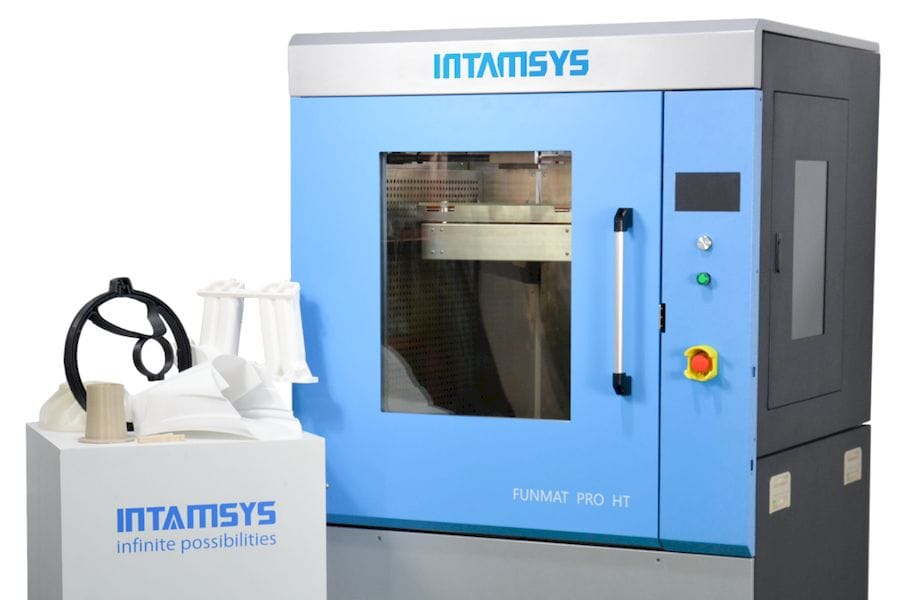
I’m reading a release from 3D printer manufacturer Intamsys that suggests a new style of business model is evolving.
It’s from Intamsys, whom we’ve covered in the past, in particular their unusually named FUNMAT 3D printer (it is a contraction of “Functional Materials”, with its focus on engineering materials.) Their equipment is designed specifically to handle higher temperature materials that have been challenging to 3D print on lesser devices.
What the Shanghai-based company announced was a 3D print service with worldwide delivery capability.
3D print services are not particularly new; they’ve existed for many years. Some of the major manufacturers such as 3D Systems and Stratasys even operate very large scale 3D print services for industry, which are usually equipped with their own products, of course.
But smaller 3D printer manufacturers don’t really have that option. So why set up a 3D print service?
Intamasys explains:
The company provides professional-grade online 3D printing and manufacturing services that empower engineers and designers with geometric and design freedom, excellent strength to weight ratio, faster time to market and higher cost efficiencies by leveraging on INTAMSYS’ comprehensive range of materials, finishes, and manufacturing production expertise.
That’s certainly a bit vague and obvious, but I think I know another reason why they’d announce a 3D print service.
I think it’s the very old “try before you buy” concept, and when you think about it, the time is exactly right to do so in the 3D printing industry.
Let’s consider these facts:
- There is great competition among professional 3D printer manufacturers, and many of them
- All players seek to provide high quality prints made in as many practical engineering materials as possible.
- Pricing of these professional machines is a lot higher than the inexpensive desktop 3D printers we’ve seen, high enough to warrant some investigation before committing to purchase one
- The new capabilities of recent professional 3D printers have attracted interest from many smaller organizations that have not previously used 3D printing technology
The problem here is that these smaller operations may not want to commit large (for them) dollars toward an uncertain technology from an unknown (to them) provider. Complicating the matter is that initial forays into 3D printing are inevitably small and experimental, often not sufficient to justify the major cost of purchasing equipment immediately.
Technology use must be proven within the company; the department heads or financial types must be shown that there is a product quality and financial business case to expand the use of the technology. They must also prove that a vendor’s equipment is suitable.
What’s the best way to do this? Try a few prints at a low cost of entry. Once this has been successfully done a few times and everyone agrees, equipment purchases proceed much more smoothly.
That’s what I think is really going on here: Intamsys is creating a path of least resistance for smaller companies to strongly consider buying their equipment after first experiencing it at low cost from their 3D print service.
Now the question is, how many other manufacturers of professional 3D printers will adopt this strategy? I would not be surprised if it becomes a widely used approach by smaller 3D printer manufacturers.
Via Intamsys

